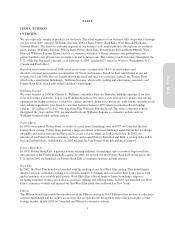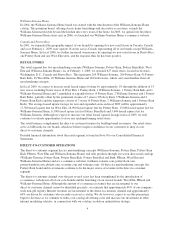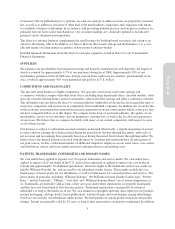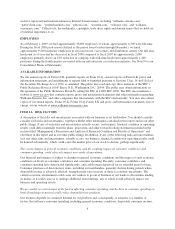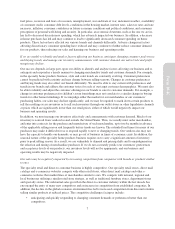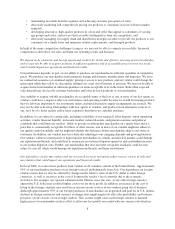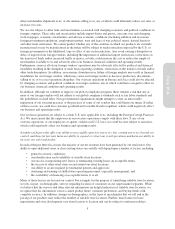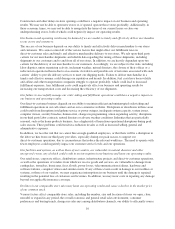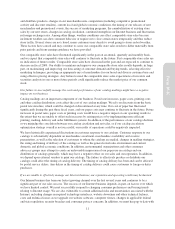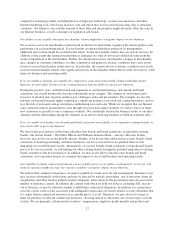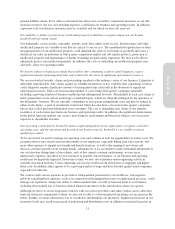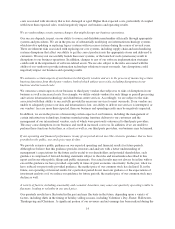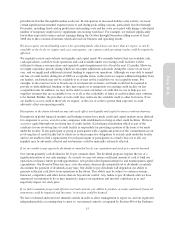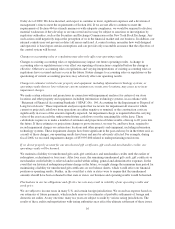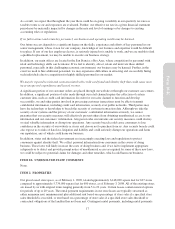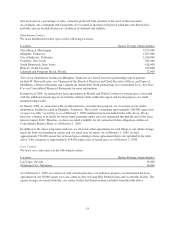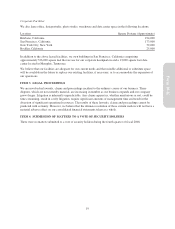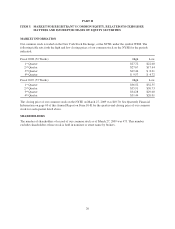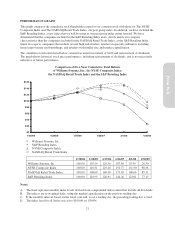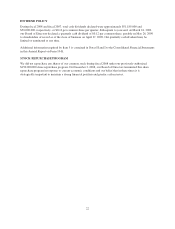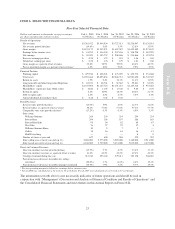Pottery Barn 2008 Annual Report Download - page 25
Download and view the complete annual report
Please find page 25 of the 2008 Pottery Barn annual report below. You can navigate through the pages in the report by either clicking on the pages listed below, or by using the keyword search tool below to find specific information within the annual report.
general liability claims. If we suffer a substantial loss that is not covered by commercial insurance or our self-
insurance reserves, the loss and attendant expenses could harm our business and operating results. In addition,
exposures exist for which no insurance may be available and for which we have not reserved.
Our inability or failure to protect our intellectual property would have a negative impact on our brands,
goodwill and operating results.
Our trademarks, service marks, copyrights, patents, trade dress rights, trade secrets, domain names and other
intellectual property are valuable assets that are critical to our success. The unauthorized reproduction or other
misappropriation of our intellectual property could diminish the value of our brands or goodwill and cause a
decline in our sales. In industries in which many competitors market and sell similar products, protection of
intellectual property and maintenance of distinct branding are particularly important. We may not be able to
adequately protect our intellectual property. In addition, the costs of defending our intellectual property may
adversely affect our operating results.
We may be subject to legal proceedings that could be time consuming, result in costly litigation, require
significant amounts of management time and result in the diversion of significant operational resources.
We are involved in lawsuits, claims and proceedings incident to the ordinary course of our business. Litigation is
inherently unpredictable. Any claims against us, whether meritorious or not, could be time consuming, result in
costly litigation, require significant amounts of management time and result in the diversion of significant
operational resources. There are an increasing number of cases being filed against companies generally,
including a growing number of business method patent infringement lawsuits. The plaintiff in each case claims to
hold a patent that covers certain technology or methodologies, which are allegedly infringed by the operation of
the defendants’ business. We are currently a defendant in such patent infringement cases and may be named in
others in the future, as part of an industry-wide trend. There has also been a rise in lawsuits against companies
like us that collect personal information from customers. The cost of defending such claims or the ultimate
resolution of such claims may harm our business and operating results. In addition, the significant deterioration
in the global financial markets can create a more litigious environment and therefore subjects us to increased
exposure to shareholder lawsuits.
Our operating results may be harmed by unsuccessful management of our employment, occupancy and other
operating costs, and the operation and growth of our business may be harmed if we are unable to attract
qualified personnel.
To be successful, we need to manage our operating costs and continue to look for opportunities to reduce costs. We
recognize that we may need to increase the number of our employees, especially during peak sales seasons, and
incur other expenses to support new brands and brand extensions, as well as the opening of new stores and
direct-to-customer growth of our existing brands. Alternatively, if we are unable to make substantial adjustments to
our cost structure during times of uncertainty, such as this current economic environment, we may incur
unnecessary expenses, may have too few resources to properly run our business, or our business and operating
results may be negatively impacted. From time to time, we may also experience union organizing activity in
currently non-union facilities. Union organizing activity may result in work slowdowns or stoppages and higher
labor costs. In addition, there appears to be a growing number of wage-and-hour lawsuits against retail companies,
especially in California.
We contract with various agencies to provide us with qualified personnel for our workforce. Any negative
publicity regarding these agencies, such as in connection with immigration issues or employment practices, could
damage our reputation, disrupt our ability to obtain needed labor or result in financial harm to our business,
including the potential loss of business-related financial incentives in the jurisdictions where we operate.
Although we strive to secure long-term contracts with our service providers and other vendors and to otherwise
limit our financial commitment to them, we may not be able to avoid unexpected operating cost increases in the
future. Further, we incur substantial costs to warehouse and distribute our inventory. Significant increases in our
inventory levels may result in increased warehousing and distribution costs in addition to potential increases in
13
Form 10-K


